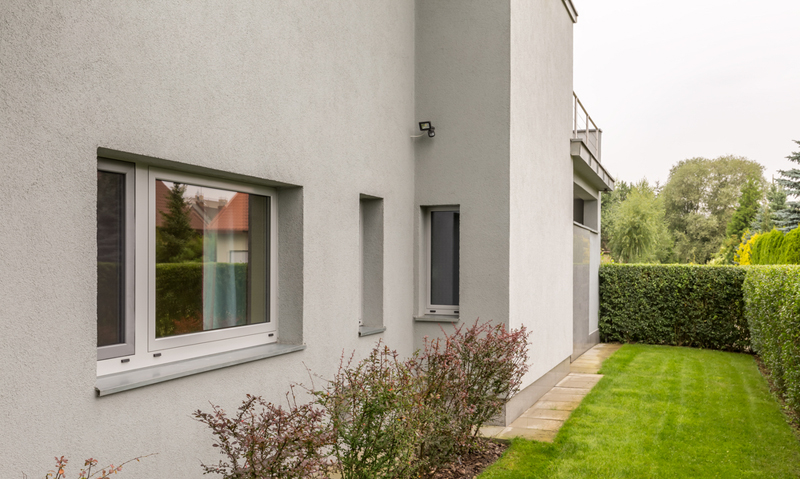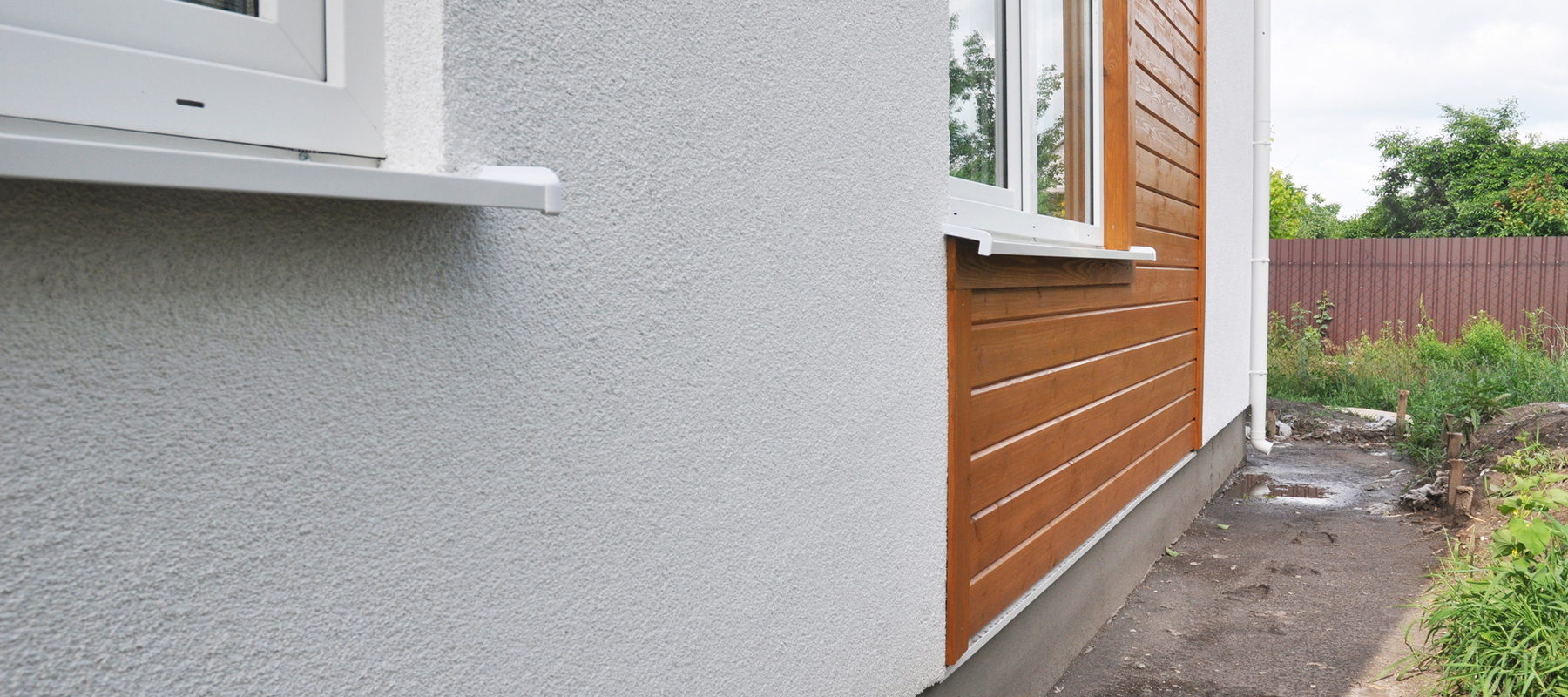Stucco Siding Costs – Materials, Textures & Installation Prices
Last Updated: December 05, 2023

Fact Checked By: Ryan Maguire
On This Page
While the use of stucco siding on American homes began in the 1950s, the material can be traced back to the Greeks and Romans, who used a stucco-like mixture for wall frescoes and sculptures.
Nowadays synthetic stucco, with a unique set of benefits, is also an option for homeowners.
Whether traditional or synthetic, stucco siding is durable, and great-looking.
Stucco Siding Average Costs #
Stucco siding typically costs $8 - $15 per square foot installed. Key factors affecting the cost include:
Type of stucco - Traditional 3-coat stucco is most affordable starting around $8 per sq ft. One-coat systems cost $12-15 per sq ft.
Surface finish - Smooth finishes are cheapest. More decorative finishes like lace, dash textures, or acrylic add $2-$5 per square foot.
Prep work - Any repairs to walls, installation of lath, tear-off of old siding raises costs.
Accessibility - Multi-story homes or difficult to access walls increase pricing.
Trim - Matching foam trim, corner pieces, foundation ledges add expense.
Location - Labor rates for stucco crews vary regionally.
For a typical 2500 sq ft two-story suburban home, expect to budget around $25,000 - $45,000 for a new stucco exterior. Quotes from stucco contractors are essential.

Stucco Siding Installation Cost Examples #
"I had a basic one-coat stucco applied to my small 1,500 sq ft southwest style home. The stucco itself cost $10 per sq ft and with the foam trim and corner pieces, the total stucco siding install was $18,000." - Amanda T.
"We went with a hand-troweled lace finish stucco for our 2,200 sq ft California bungalow. The decorative 3-coat stucco cost $12 per sq ft and with contractor fees our total stucco installation cost was $30,400." - James S.
"I wanted a modern adobe look so I had simulated stone stucco installed on my large 2,800 sq ft desert home. The special roller-applied textured stucco was $15 per sq ft. With foam trim accents my total new stucco cost was $49,000." - Olivia W.
"For our multi-unit housing project we used a basic 1-coat stucco system without any decorative finish. The stucco itself was $10 per sq ft and contractor fees brought the install total to $12 per sq ft. For 8,000 sq ft our total stucco siding install was $96,000." - Steve J.
As you see, with the variety of stucco styles and finishes, installed costs ranged from $10 - $15 per sq ft. The total job expense varies based on special finishes, detailing, accessibility and contractor rates.
Types of Stucco Siding #
The main types of stucco siding include:
Traditional Stucco - This is a 3 coat process with a scratch coat, brown coat, then a finish coat. The most affordable stucco option starting around $8 per sq ft installed.
One-Coat Stucco - Uses acrylic finishes so only one thicker application is needed. Costs range from $12-15 per sq ft installed. Fast application.
EIFS - Exterior Insulation & Finish Systems add an insulated foam backing for improved insulation. Costs range from $10-18 per sq ft.
Simulated Stone Stucco - Uses textured roll-on acrylic finishes to mimic real stacked stone. Typically costs $12-20 per sq ft installed.
Synthetic Stucco - Made up of foam panels rather than multiple stucco coats but provides a similar look. Average cost is $10-14 per sq ft.
The look can be changed using different base colors and textured acrylic finishes on any stucco type.
Pros and Cons of Stucco Siding #
| Pros | Cons |
|---|---|
| Attractive traditional appearance | Relatively expensive siding option |
| Very durable if properly maintained | Prone to cracking if poorly installed |
| Low maintenance | Textured finishes trap dirt |
| Range of decorative styles and finishes | Not a DIY project. Requires pros |
| Increased fire resistance rating | Difficult repairs once damaged |
| Adaptable to custom architectural details | Not suitable for freezing, damp climates |
As this overview shows, stucco siding offers aesthetic appeal but has some downsides like cost and climate limitations to consider.
